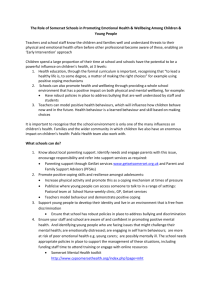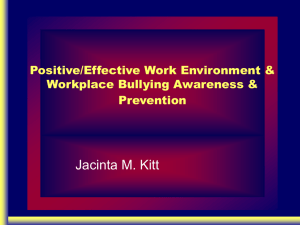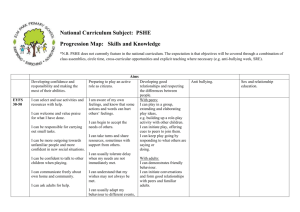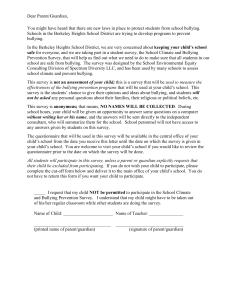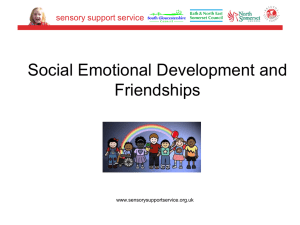Peer Conflict vs Bullying
advertisement
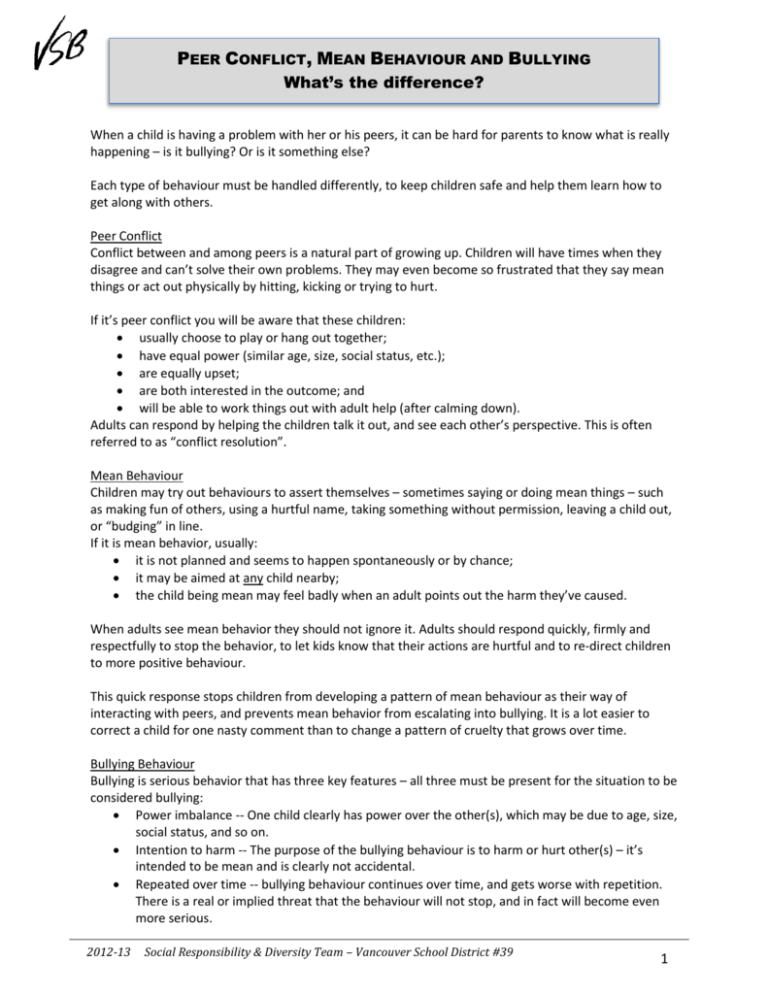
PEER CONFLICT, MEAN BEHAVIOUR AND BULLYING What’s the difference? When a child is having a problem with her or his peers, it can be hard for parents to know what is really happening – is it bullying? Or is it something else? Each type of behaviour must be handled differently, to keep children safe and help them learn how to get along with others. Peer Conflict Conflict between and among peers is a natural part of growing up. Children will have times when they disagree and can’t solve their own problems. They may even become so frustrated that they say mean things or act out physically by hitting, kicking or trying to hurt. If it’s peer conflict you will be aware that these children: usually choose to play or hang out together; have equal power (similar age, size, social status, etc.); are equally upset; are both interested in the outcome; and will be able to work things out with adult help (after calming down). Adults can respond by helping the children talk it out, and see each other’s perspective. This is often referred to as “conflict resolution”. Mean Behaviour Children may try out behaviours to assert themselves – sometimes saying or doing mean things – such as making fun of others, using a hurtful name, taking something without permission, leaving a child out, or “budging” in line. If it is mean behavior, usually: it is not planned and seems to happen spontaneously or by chance; it may be aimed at any child nearby; the child being mean may feel badly when an adult points out the harm they’ve caused. When adults see mean behavior they should not ignore it. Adults should respond quickly, firmly and respectfully to stop the behavior, to let kids know that their actions are hurtful and to re-direct children to more positive behaviour. This quick response stops children from developing a pattern of mean behaviour as their way of interacting with peers, and prevents mean behavior from escalating into bullying. It is a lot easier to correct a child for one nasty comment than to change a pattern of cruelty that grows over time. Bullying Behaviour Bullying is serious behavior that has three key features – all three must be present for the situation to be considered bullying: Power imbalance -- One child clearly has power over the other(s), which may be due to age, size, social status, and so on. Intention to harm -- The purpose of the bullying behaviour is to harm or hurt other(s) – it’s intended to be mean and is clearly not accidental. Repeated over time -- bullying behaviour continues over time, and gets worse with repetition. There is a real or implied threat that the behaviour will not stop, and in fact will become even more serious. 2012-13 Social Responsibility & Diversity Team – Vancouver School District #39 1 Peer Conflict, Mean Behaviour and Bullying – What’s the difference? The effect on the child who is being bullied is increased fear, apprehension, and distress. Often by the time adults find out about what is happening, the child has tried many ways to stop the bullying but cannot do so on their own. Adults must address the bullying behaviour and ensure the safety of the student who has been targeted. They also need to reassure the children who may have witnessed the behaviour that adults are taking care of it. When schools respond to bullying, staff will also help the child who has been bullying others to take responsibility for their actions, and change their behaviour. They will monitor the situation to ensure the bullying stops, and will support the child who has been bullied to regain confidence and a sense of safety. Staff may follow-up with the students who observed the behaviour to help them learn what to do when they see bullying. The “conflict resolution” style of bringing the children together is not recommended in bullying situations, until considerable time has gone by and all children are feeling safe enough to talk about what happened so that relationships can be healed. 2012-13 Social Responsibility & Diversity Team – Vancouver School District #39 2


